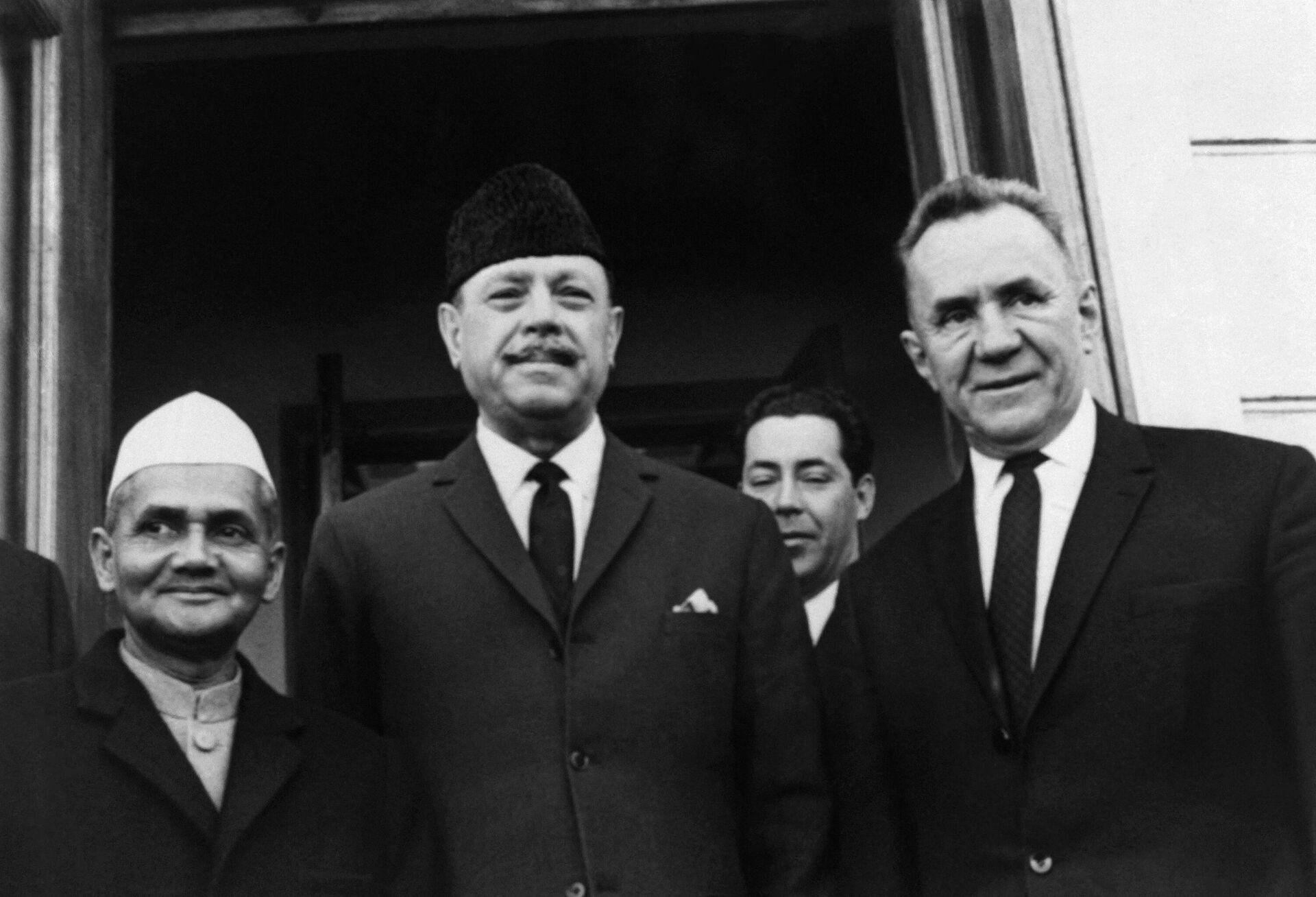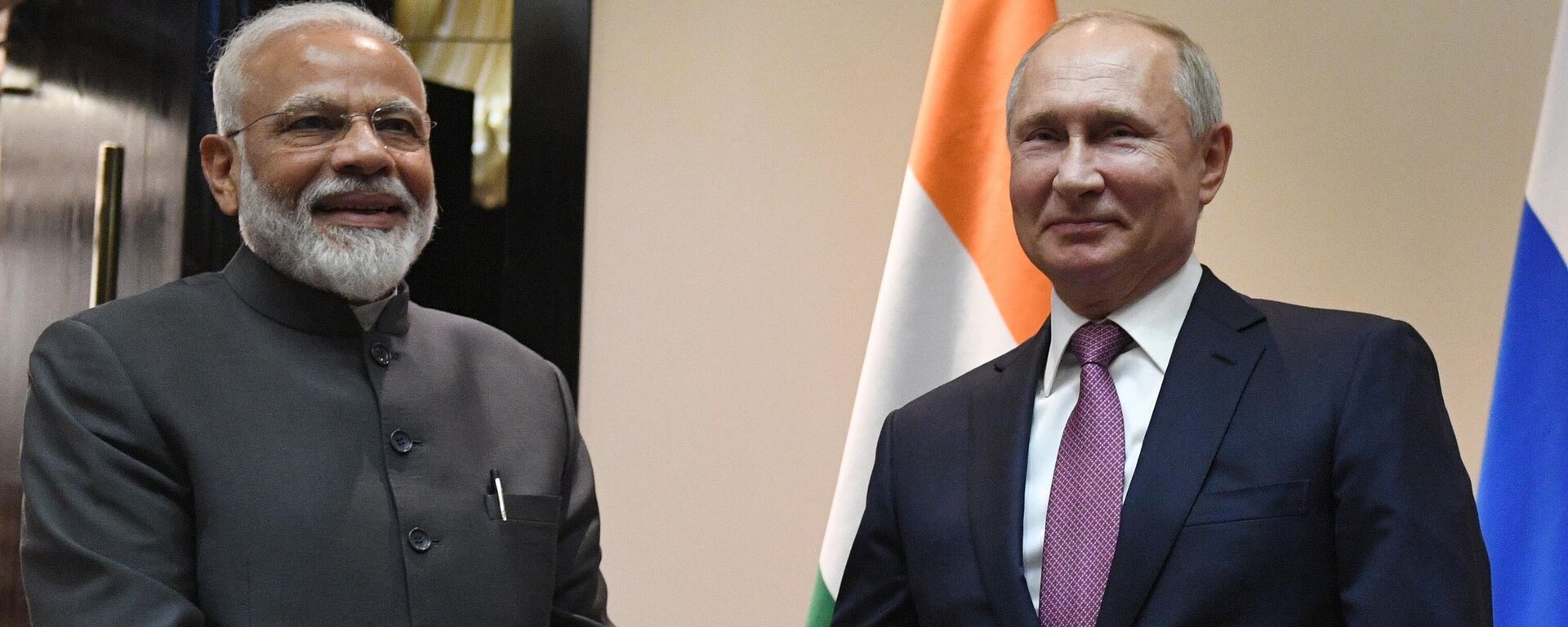https://sputniknews.in/20230923/remembering-the-1965-indo-pakistan-war--4357760.html
Remembering the 1965 Indo-Pakistan War
Remembering the 1965 Indo-Pakistan War
Sputnik India
India and Pakistan today exist as rival neighbors who have fought four wars, including two over Kashmir and one linked to the formation of Bangladesh. 23.09.2023, Sputnik India
2023-09-23T18:42+0530
2023-09-23T18:42+0530
2023-09-23T18:42+0530
the united nations (un)
pakistan
india
jammu
jawaharlal nehru
kashmir conflict
india-pakistan war of 1971
ministry of defence (mod)
jammu and kashmir (j&k)
pakistan army
https://cdn1.img.sputniknews.in/img/07e7/09/17/4406660_0:672:2048:1824_1920x0_80_0_0_206ae66cecd819c02227916387e255c5.jpg
India is commemorating the 58th anniversary of the 1965 war with Pakistan. The war culminated with a ceasefire and peace was achieved by USSR mediation on September 23.Although both claimed victory at the time, the 1965 India-Pakistan war ended in a stalemate, and both parties signed the Tashkent peace agreement later.How Did the War Start?As per the reports in August 1965, Pakistan launched 'Operation Gibraltar' in which somewhere between 7,000-30,000 fighters in disguise were pushed across the ceasefire line into Indian-administered Jammu and Kashmir.The Indian Army was tipped off about the insurgence by locals, and it reportedly arrested most of these insurgents and retaliated. By the end of August, the Indian Army captured the Haji Pir pass, 8 km into Pakistan-administered Kashmir, and Pakistan made progress in areas such as Tithwal, Uri and Poonch on the Indian side.On September 1, Pakistan launched Operation Grand Slam to capture Akhnoor, a small town in Jammu, which was an important communications location for Indian troops. The 15th Infantry Division of the Indian Army crossed the International border on September 6, officially entering the war.On September 8, Special Service Group commandos from Pakistan were parachuted onto three Indian airbases, and a tiny flotilla of the Pakistan Navy carried out a bombardment of the Indian Navy’s radar station coastal town of Dwarka in Gujarat state.How Did The War End?By the second week of the war, it had already drawn the attention of international leaders and many countries wanted to play the role of mediator. However, it could only be achieved by the initiative of Soviet Union representative Alexei Kosygin who talked to both nations.Both nations accepted a United Nations resolution for a ceasefire which took effect from September 22.The warring sides signed a peace deal, known as the Tashkent Declaration, on January 10, 1966, in Tashkent, Uzbekistan.Who Won?Each side blamed the other for having opened fire first and claimed to have fought the battle to save their country. However, these claims could not be verified independently.Pakistan marks 'Defense Day' on September 6 to commemorate the country’s 1965 victory against India.Meanwhile, India, in 2015, commemorated its 50 years of "triumph" over Pakistan in 1965 in more than three weeks of celebrations. The celebrations began on August 28, the day Indian troops captured the strategic Haji Pir Pass in Pakistan, and continued until September 22, the day India and Pakistan agreed to a UN-sponsored ceasefire.The Tashkent AgreementThen Indian Prime Minister Lal Bahadur Shastri, while accepting Soviet mediation, said at the Indian Parliament, “No one can ever contest the view that ultimately India and Pakistan will have to live together as peaceful neighbors. We cannot therefore say no to any efforts, which may help bring about such a situation, made by those who are sincere and genuine in their feelings of goodwill and friendship.”The talks began in Tashkent on January 3, 1966, with Kosygin meeting Shastri and Pakistan’s President Mohammad Ayub Khan.The Tashkent Agreement was signed on January 10, 1966, agreeing that both sides will exert all efforts to create good neighborly relations in accordance with the United Nations Charter.Also, all armed personnel of the two countries were withdrawn by February 25 to the positions they held prior to August 5, 1965, and both sides observed the ceasefire terms on the ceasefire line.
https://sputniknews.in/20230913/russia-is-reliable-partner-for-global-south-ex-indian-envoy-says-4226914.html
pakistan
india
jammu
jammu and kashmir (j&k)
Sputnik India
feedback.hindi@sputniknews.com
+74956456601
MIA „Rossiya Segodnya“
2023
Deexa Khanduri
https://cdn1.img.sputniknews.in/img/07e6/0c/13/138923_52:0:533:481_100x100_80_0_0_cadf23d341691fc65ff2b22fd1afe584.jpg
Deexa Khanduri
https://cdn1.img.sputniknews.in/img/07e6/0c/13/138923_52:0:533:481_100x100_80_0_0_cadf23d341691fc65ff2b22fd1afe584.jpg
News
en_IN
Sputnik India
feedback.hindi@sputniknews.com
+74956456601
MIA „Rossiya Segodnya“
Sputnik India
feedback.hindi@sputniknews.com
+74956456601
MIA „Rossiya Segodnya“
Deexa Khanduri
https://cdn1.img.sputniknews.in/img/07e6/0c/13/138923_52:0:533:481_100x100_80_0_0_cadf23d341691fc65ff2b22fd1afe584.jpg
tashkent agreement, how did 1965 start?, how did the war end?, how did the war end?, who won the 1965 indo-pak war?, tashkent agreement, 58th anniversary of the second indo-pakistan war, 1965 indo-pak war short, 1965 india-pakistan war ended in a stalemate, óperation gibraltar, india captured haji pir pass, pakistan-administered kashmir, indian troops, soviet premier alexei kosygin ,
tashkent agreement, how did 1965 start?, how did the war end?, how did the war end?, who won the 1965 indo-pak war?, tashkent agreement, 58th anniversary of the second indo-pakistan war, 1965 indo-pak war short, 1965 india-pakistan war ended in a stalemate, óperation gibraltar, india captured haji pir pass, pakistan-administered kashmir, indian troops, soviet premier alexei kosygin ,
Remembering the 1965 Indo-Pakistan War
Deexa Khanduri
Sputnik correspondent
India and Pakistan today exist as rival neighbors who have fought four wars, including two over Kashmir and one linked to the formation of Bangladesh.
India is commemorating the 58th anniversary of the 1965 war with Pakistan. The war culminated with a ceasefire and peace was achieved by USSR mediation on September 23.
Although both claimed victory at the time, the 1965 India-Pakistan war ended in a stalemate, and
both parties signed the Tashkent peace agreement later.
As per the reports in August 1965, Pakistan launched 'Operation Gibraltar' in which somewhere between 7,000-30,000 fighters in disguise were pushed across the ceasefire line into Indian-administered Jammu and Kashmir.
The Indian Army was tipped off about the insurgence by locals, and it reportedly arrested most of these insurgents and retaliated. By the end of August, the Indian Army captured the Haji Pir pass, 8 km into Pakistan-administered Kashmir, and Pakistan made progress in areas such as Tithwal, Uri and Poonch on the Indian side.
On September 1, Pakistan launched Operation Grand Slam to capture Akhnoor, a small town in Jammu, which was an
important communications location for Indian troops. The 15th Infantry Division of the Indian Army crossed the International border on September 6, officially entering the war.
On September 8, Special Service Group commandos from Pakistan were parachuted onto three Indian airbases, and a tiny flotilla of the Pakistan Navy carried out a bombardment of the Indian Navy’s radar station coastal town of Dwarka in Gujarat state.
By the second week of the war, it had already drawn the attention of international leaders and many countries wanted to play the role of mediator. However, it could only be achieved by the initiative of Soviet Union representative Alexei Kosygin who talked to both nations.
Both nations accepted a United Nations resolution for a ceasefire which took effect from September 22.
The warring sides signed a peace deal, known as the Tashkent Declaration, on January 10, 1966, in Tashkent,
Uzbekistan.
Each side blamed the other for having opened fire first and claimed to have fought the battle to save their country. However, these claims could not be verified independently.
Pakistan marks 'Defense Day' on September 6 to commemorate the country’s 1965 victory against India.
Meanwhile, India, in 2015, commemorated its 50 years of "triumph" over Pakistan in 1965 in more than three weeks of celebrations.
The celebrations began on August 28, the day Indian troops captured the strategic Haji Pir Pass in Pakistan, and continued until September 22, the day India and Pakistan agreed to a UN-sponsored ceasefire.
Then Indian Prime Minister Lal Bahadur Shastri, while accepting Soviet mediation, said at the Indian Parliament, “No one can ever contest the view that ultimately India and Pakistan will have to live together as peaceful neighbors. We cannot therefore say no to any efforts, which may help bring about such a situation, made by those who are sincere and genuine in their feelings of goodwill and friendship.”
Even before leaving the country, Shastri said, “Jawaharlalji (first Indian Prime Minister Jawahar Lal Nehru) used to say the Soviet Union had given us many gifts; the most precious gift was the gift of friendship. I can do better than [that] to echo these sentiments.”
The talks began in Tashkent on January 3, 1966, with Kosygin meeting Shastri and Pakistan’s President Mohammad Ayub Khan.
The Tashkent Agreement was signed on January 10, 1966, agreeing that both sides will exert all efforts to create
good neighborly relations in accordance with the United Nations Charter.
Also, all armed personnel of the two countries were withdrawn by February 25 to the positions they held prior to August 5, 1965, and both sides observed the ceasefire terms on the ceasefire line.




